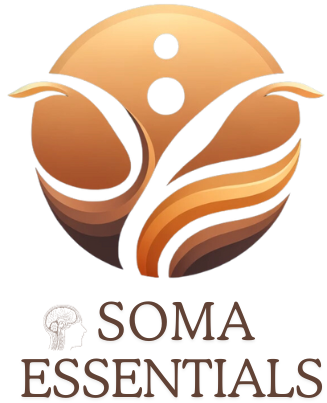Improving Balance and Coordination through Somatic Movement
Somatic movement is a powerful practice that can improve your overall balance and coordination. Whether you’re an athlete looking to enhance your performance or simply someone who wants to move with more grace and ease, somatic movement can help you achieve your goals. This article will explore the many benefits of somatic movement, with a particular focus on how it can improve balance and coordination. From understanding the fundamentals of somatic movement to learning specific techniques and exercises, we’ll delve into everything you need to know about this transformative practice. So if you’re ready to take your mind-body connection to the next level and experience the incredible benefits of somatic movement, keep reading!Somatic movement is a holistic approach that focuses on the mind-body connection and improving overall physical and emotional well-being. It is a form of therapy that aims to increase body awareness and self-discovery through gentle movements and exercises. Unlike traditional therapy, somatic therapy places emphasis on the present moment and the individual’s physical sensations rather than their thoughts or past experiences.One of the key components of somatic movement is the use of exercises to promote balance and coordination. These exercises are slow, mindful movements that allow individuals to connect with their body and become more aware of their movements. Some common somatic exercises include breathing techniques, gentle stretches, and slow, intentional movements.Somatic therapy can also be beneficial for those looking to improve their balance and coordination. By focusing on sensations rather than appearance or performance, individuals can become more in tune with their body and its needs. This can lead to better balance and coordination as they become more aware of their movements and how their body responds.In addition to exercises, there are also principles of somatic movement that are important to understand. These principles include focusing on the present moment, being non-judgmental towards oneself, and being open to exploration and discovery. By incorporating these principles into daily life, individuals can improve their body awareness and enhance their overall well-being.In conclusion, somatic movement is a powerful tool for improving balance and coordination. Through somatic therapy, exercises, and principles, individuals can become more in tune with their body and its needs. So if you’re looking to improve your physical abilities and overall well-being, consider incorporating somatic movement into your daily routine.
Somatic Therapy: A Holistic Approach to Healing
Somatic therapy is a form of psychotherapy that focuses on the mind-body connection and improving overall well-being. It combines traditional talk therapy with body-centered techniques to help individuals better understand and release physical and emotional tension, trauma, and stress.
This holistic approach to healing recognizes that our experiences and emotions are stored not only in our minds but also in our bodies. By becoming more aware of our body sensations and movements, we can gain a deeper understanding of our thoughts, feelings, and behaviors.
Somatic therapy can involve various techniques such as breathing exercises, mindfulness practices, gentle movements, and touch. These techniques can help individuals release tension and trauma held in the body, increase body awareness, and improve the mind-body connection.
Through somatic therapy, individuals can learn to listen to their bodies and become more attuned to their needs. This can lead to improved balance and coordination as they become more aware of their physical movements and how they affect their overall well-being.
Somatic Exercises: Simple Ways to Incorporate Somatic Movement into Your Daily Routine
Somatic exercises are gentle movements that can be easily incorporated into your daily routine to improve balance and coordination. These exercises focus on the mind-body connection and can help to increase body awareness and self-discovery. Here are some examples of somatic exercises and their benefits:
- Body Scans: This exercise involves lying down on your back and focusing on each individual part of your body, starting from your toes and moving up to your head. This helps to release tension and promote relaxation.
- Shoulder Rolls: Stand with your feet hip-width apart and slowly roll your shoulders forward and then backward. This helps to release tension in the upper body and improve posture.
- Pelvic Tilts: Lie on your back with your knees bent and feet flat on the floor. Slowly tilt your pelvis up and then back down, focusing on the movement and engaging your core muscles. This exercise can help to improve lower back pain and improve pelvic stability.
Incorporating these simple somatic exercises into your daily routine can have numerous benefits, including improved balance, coordination, flexibility, and overall physical and emotional well-being. It is recommended to practice these exercises regularly for maximum results.
Principles of Somatic Movement: Understanding the Mind-Body Connection
Somatic movement is based on the principle that our body and mind are interconnected and that physical movements can have a direct impact on our emotional and mental well-being. This approach emphasizes the importance of body awareness and self-discovery in achieving balance and coordination.
One of the main principles of somatic movement is the focus on the present moment. This means paying attention to our body’s sensations, movements, and feelings in the present moment, rather than being lost in thoughts about the past or future. By being fully present in our body, we can improve our balance and coordination by being more aware of our movements and how they affect our overall well-being.
Another important principle of somatic movement is the idea of gentle and mindful movements. Unlike traditional exercise that focuses on pushing our bodies to the limit, somatic movement encourages us to move slowly and gently, paying attention to how each movement feels in our body. This allows us to listen to our body’s signals and make adjustments accordingly, leading to better balance and coordination.
Somatic movement also emphasizes the importance of relaxation. By consciously relaxing our muscles and letting go of tension, we can improve our body’s natural alignment and range of motion. This can have a direct impact on our balance and coordination, as tense muscles can throw off our body’s alignment and hinder smooth movements.
In addition, somatic movement focuses on the mind-body connection by incorporating breathing techniques into exercises. By synchronizing our breath with movement, we can bring more awareness to our body and enhance our mind-body connection. This can lead to improved balance and coordination as we become more in tune with our body’s movements.
In conclusion, incorporating somatic movement into your daily routine can have significant benefits for your mind and body. By practicing somatic therapy and somatic exercises and understanding the principles of somatic movement, you can improve your overall physical and emotional well-being. So if you’re looking to improve your balance and coordination, give somatic movement a try.

